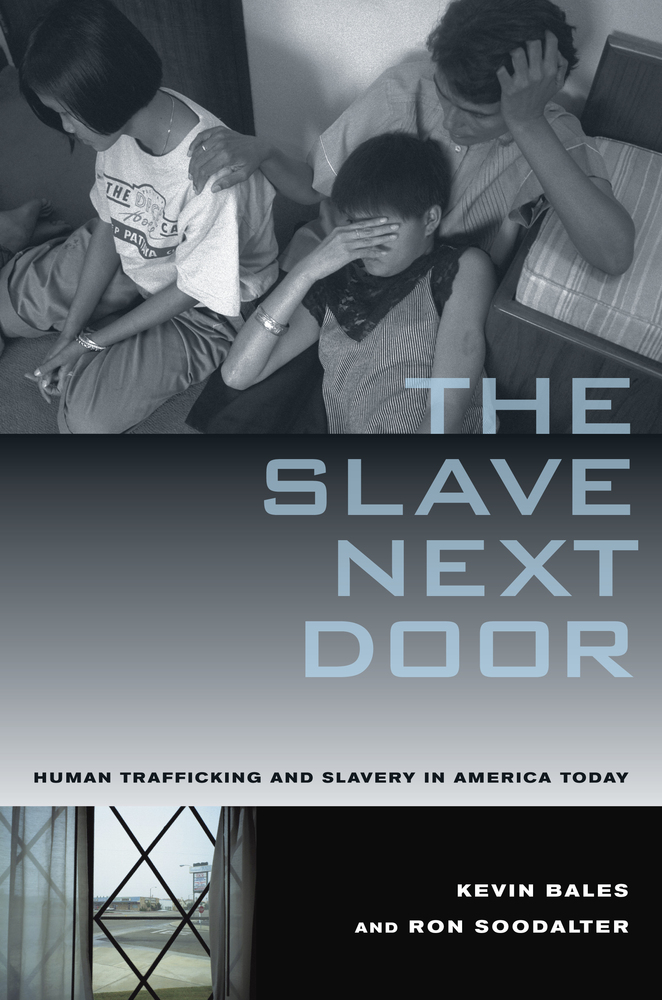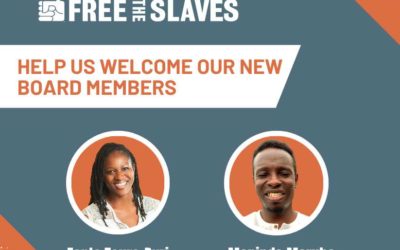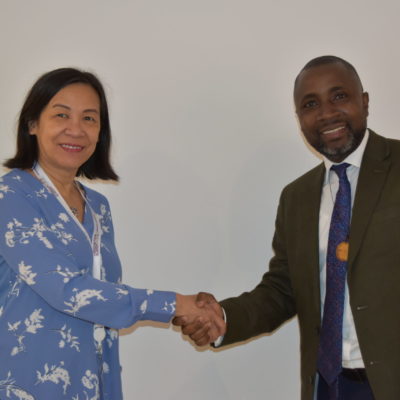U.S. Anti Trafficking Ambassador Luis CdeBaca gave an eloquent speech on modern slavery yesterday, at a special symposium titled “Slavery: Through the Eyes of George Washington”, hosted by Free the Slaves, Black Women United for Action and Mount Vernon Ladies’ Association in Mount Vernon, Virginia.
He said that of all the different kinds of slavery, “perhaps most vulnerable” are domestic workers: “Usually working outside the protections of prevailing labor laws—and sadly, that’s the case in the United States today—and socially isolated in their workplace, domestic workers too easily fall into modern day slavery.”
Here is Luis CdeBaca’s speech (via U.S. State Department website):
Good afternoon. I am honored to be with all of you today on the grounds of Mount Vernon to discuss the phenomenon of modern slavery. I would like to thank the Mount Vernon Ladies’ Association, Black Women United for Action, and Free the Slaves for partnering together to host this event and raise awareness about slavery—both in the past and in the present form.
Throughout the day you have heard from many subject-matter experts, from the highest levels of government, to non-governmental organizations, to victims who have become survivors. I am heartened to see the scope of interest and action from so many different groups and individuals. Thank you for all that you do.
Right now we are just miles from where generations of Americans have walked in pursuit of their own rights, equalities, and freedoms. A lot of different words have been used to describe why.
In 1848, 77 slaves walked quietly through the streets of Washington, clandestinely making their way to a small ship, the Pearl, which was to take them North, away from their bondage. No matter what it was called – a “particular institution,” “servants,” or “staff”– it was slavery, and they were making a run for freedom.
As you know, in the early part of this century, women across America marched the streets of Washington to gain the right to vote. Sometimes it was called women’s suffrage, or voice, or having their say at the ballot box. No matter what the name, they simply sought equality.
Decades later, Reverend Martin Luther King, Jr. led the Civil Rights Movement in the March on Washington and thousands of Americans joined him in the fight for jobs, equality, rights, fairness, and freedom. No matter what you call it, they sought their constitutional rights.
As we discuss this history from the days of Washington to the suffragettes to the state of human trafficking in the world today, one thing remains constant: people continue to seek their freedoms. Human trafficking is a term that can mean different things to different audiences and in different languages. As Secretary Clinton said earlier this year, “Let’s call it what it really is—a modern form of slavery.”
And yet, somewhere in the world, a young girl awoke bound by the chains of force, fraud, and coercion. Instead of setting off for school this morning, someone picks up a gun that is longer than he is as a child soldier. This evening, someone will be forced to peddle trinkets late into the night instead of resting in the safe confines of a home.
No matter what we may call it—debt bondage, servitude, sex trafficking, labor trafficking, forced labor, or enslavement—for as long as people of every community, culture, and country in the world are enslaved, our work and efforts must go on.
The United States’ mandate in combating trafficking is a long one but it is a simple one: we must deploy every tool at our disposal in a strategic and coordinated fashion. We cannot focus on one form of trafficking over another if we truly want to end this crime.
Translating the fight against modern slavery into 21st Century foreign policy is essential. It cross-cuts and impacts so many policy concerns; it is a fluid phenomenon that responds to market demands, vulnerabilities in laws, weak penalties, natural disasters, and economic and environmental instabilities.
Just as the slave-owners of the 1700s and 1800s and the sharecroppers of the 1900s knew well, there is a great economic drive to hold people in servitude. To those individuals who owned plantations, they pursued a business model based on slavery in order to get their crops harvested, to keep homes and businesses thriving, and most of all: to turn a profit.
Yet today, nearly 150 years after Abraham Lincoln signed the Emancipation Proclamation and decades since Jim Crow was absolved, criminals hold innocent human beings in involuntary servitude because market demands—whether for labor or sexual exploitation—continue to exist in the shadows of society.
Current estimates indicate that modern slavery is a multi-billion—billion with a “B”—dollar industry with profits lining the pockets of criminals that continue to force, fraud, or coerce people into involuntary servitude.
Research around the world, including some funded by the Office to Monitor and Combat Trafficking in Persons, shows that workers are often trapped in a web of deceit and debt bondage by unscrupulous recruiters, labor brokers, and employers. And too often, these debts are legal, or are dealt with only as administrative violations.
A better system for ensuring that guest workers are not enslaved is clearly needed in labor markets around the world—in the Gulf region, in Africa, in Southeast Asia—and here in the United States as well. Perhaps most vulnerable among that group are the domestic workers. From Indonesian girls and women exploited in the Gulf to Malagasy women in Lebanon, to African children here in the United States, domestic workers are uniquely vulnerable. Usually working outside the protections of prevailing labor laws—and sadly, that’s the case in the United States today—and socially isolated in their workplace, domestic workers too easily fall into modern slavery.
So, too, we have seen reports of cases where women who traveled to work as a maid or a waitress have been enslaved as prostitutes, not simply forced to work behind closed doors. We need to break that zone of impunity, to open the closed doors of abuse, rape, and sexual servitude, and confront and eliminate the conditions under which women suffer.
How do we tackle a crime that spreads like a cancer in the shadows and has survived the test of time?
The State Department’s Office to Monitor and Combat Trafficking in Persons, in coordination with our interagency partners, utilizes diplomatic tools, such as the Trafficking in Persons Report to highlight current trends and jumpstart multilateral and bilateral action, as well as supports anti-slavery programs around the world.
Based on the minimum standards outlined in the Trafficking Victims Protection Act – the modern law abolishing all forms of human trafficking – this year the Report assessed and ranked 177 countries, including the first-ever ranking of the United States. The Report assesses how a country is doing – or not doing – in the fight against human trafficking. It’s a “smart power” tool that leads to greater partnerships. And while it may lead to tough discussions at both the bilateral and multilateral levels, it has driven action worldwide. The Office uses the Report as a roadmap. Based on that guide, it funds more than $20 million of targeted projects, such as law enforcement training, public awareness campaigns, and shelters to protect victims from their captors.
The promise of freedom that we seek to fulfill is built on the foundation of the “3P” paradigm, which works to protect victims, prevent future instances of human trafficking, and prosecute the people that commit this heinous crime. Yet, it is bolstered by a “4th P” of partnerships.
In her announcement last year of the “4th P,” Secretary Clinton said: “The criminal network that enslaves millions of people crosses borders and spans continents. So our response must do the same. So we’re committed to building new partnerships with governments and NGOs around the world, because the repercussions of trafficking affect us all.”
We have to strive toward better coordination. Not only must we coordinate through “whole of government” approach, but also with partners from unlikely or untapped sources. We are fortunate that non-governmental organizations have historically been strong partners in the anti-trafficking movement. Today, we are also working to build on our historic relationships by cultivating new partnerships with the private sector.
Partnerships augment efforts by bringing together diverse experience, amplifying messages, and leveraging resources, thereby accomplishing more together than any one entity or sector would be able to alone.
Whether it is forging key partnerships with the tourism and hospitality industries to combat child sex tourism or technological firms to examine new ways to offer victims a safe life-line or teaming up with major financial firms to empower women who have transformed from victim into survivor, the possibilities through public-private partnerships are endless.
Lassoing the “can do” spirit that we have in all sectors – from the tech geniuses that can create an application for just about anything, to the creative minds that can raise millions of dollars at the drop of a hat, to the young woman who has been a victim of sexual slavery but now operates a small business and looks to hire survivors of modern slavery – is a great challenge. Yet, it is a challenge worth seeking. The promise of freedom that we seek to fulfill will be bolstered by these partnerships.
Traffickers promise hope, but deliver pain. They prey on the victims’ needs and aspirations – a better life, a good wage. Pimps weave a web of false promises offering glamour and even love. But it is us who must deliver solutions against the challenges we face to help victims in the United States and around the world. We must provide rehabilitation services, reintegration remedies, and a life of value no matter what they have been through. And by us, I mean you; and me – all of us in partnership.
As much as public-private partnerships are driving a lot of exciting progress in a new frontier of the anti-trafficking movement, this work is about people. It is for them that we have to be hopeful, audacious, and urgent. People sometimes ask me how I can work on something as horrific as modern slavery; how I can resist the secondary trauma and the seemingly intractable challenge? At the end of the day, I think that I can continue to do this because these are not stories of despair, but of hope.
This hope may be seeded with our past, but it grows with our future. If in one short decade, we can write a law and build a paradigm, then we can implement its provisions and ensure men, women, and children alike are safeguarded in America and around the world from the crime of modern slavery.
As we leave these hallowed grounds tonight, we leave behind the historic notion of slavery. And yet, we will face the realities of modern slavery as we step back into society.
I am reminded what Frederick Douglass, one of my heroes, once said in reaction to the Dred Scott decision. He said: “… all I ask of the American people is that they live up to the Constitution, adopt its principles, imbibe its spirit, and enforce its provisions. When this is done, the wounds of my bleeding people will be healed, the chain will no longer rust on their ankles, their backs will no longer be torn by the bloody lash, and liberty, the glorious birthright of our common humanity, will become the inheritance of all.”
Frederick Douglass’ words must spur action and solutions. We can no longer just talk about the problem of modern slavery. Just as we pause to remember the brave souls who fled to the Pearl, or navigated the Underground Railroad, or the suffragettes who pursued voting rights, or Reverend King’s dream of equality, we must keep going and fight to end this crime against our fellow man and woman.
Through their memory and example, surely with the modern tools available in the last decade, we can deliver on the Constitution’s living promise of freedom both here at home and around the world.




